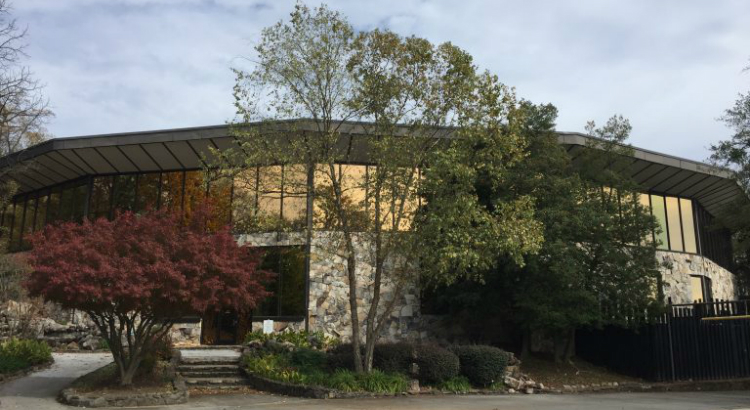Trim Tab — the online ‘zine of International Living Future Institute — is chock full of articles this month that should interest sustainable design and construction professionals in the Southeast.
Four first-person stories by professionals who’ve working on Living Building projects are grouped as “Stories from the Southeast” in advance of the ILFI’s Net Positive Atlanta workshop tomorrow at Georgia Tech. The publication also digs deep into the metaphor of “handprints,” which sustainability advocates have begun to use as a beneficent contrast to environmental footprints.
George Bandy Jr., vice president of sustainability and commercial marketing at the Mohawk Group, oversaw the flooring giant’s renovation of a small, aging modern building into the LBC Petal-certified Light Lab Design Center in Dalton, Ga. He contends that the “handprint” concept has helped transform the company’s culture.
Pursuing a strategy of handprinting has prompted us to take a hard look at the materials that go into our products and how our manufacturing processes and facilities use water and energy. It has encouraged us to study the gifts of nature when designing our products, to respect the natural world and emulate objects in it. It has broadened our view of the world, taking us out of the manufacturing facility and into the community to establish partnerships with social and environmental entities. It has focused us on wellness—the wellness of the families who use our products, the wellness of the employees who make our products, and the wellness of the communities where our products are made.
Lauren Wallace of the Epsten Group helped to found the Atlanta Living Building Collaborative. She insists that — contrary to stereotype — the region is building a community of professionals who advocate for regenerative design and construction:
I’m not alone here in the Southeast. There are tons of people wanting to do the right thing, prove naysayers wrong, and ultimately shift the mindset of people toward a carbon-negative life instead of a carbon-positive one. I’m incredibly inspired every time I attend a Living Future conference, but what I truly enjoy is coming back home and spreading knowledge that I have gained to the people in our region who are trying to solve the puzzle of “how do we accomplish this here?”
Pete Munoz of Biohabitats, which has been involved in ecological planning for the Kendeda Building for Sustainable Innovative Design, recalls the impact his colleague Erin English had on an audience during a charrette on an earlier building at Georgia Tech:
When the time came to discuss water, most team members were focused on where and how to flush the building’s toilets. After waiting for the room to settle, Erin presented aerial images of Chattahoochee River watershed, pointing out the building’s location relative to this body of water that carved the land and helped define the region. Erin also mentioned that the building feeds into a combined sewer, the kind infamous for beelining pollution to surrounding waterbodies during storms. Rather than ask “Where will we flush our toilets?” Erin asked, “How can this building be a better steward of its watershed? How can it positively impact the Chattahoochee River and the people and natural systems it supports?” Erin said she could feel the energy in the room shift, as the team widened the lens from the building alone to its role, its impact, and finally its potential, within the campus and wider community.
Finally, Matt Leavell, director of design at the University of Alabama Center for Economic Development, writes about his experience shepherding the first building in the Southeast completed to meet full Living Building Challenge certification.
A tension exists between the human desire to be part of the natural environment and to concurrently protect that environment from human impact. Sometimes the appropriate reaction to that tension is to create a separation between people and nature. However, in the case of Gulf State Park, interaction and education are embedded in the mission of its parent organization, the Alabama State Parks System. In addition, the tourism-based economy of this region is dependent on the environment as its primary attraction. To separate visitors from the environment would mean removing a major source of funding for protection of that environment.
Wallace and Leavell, as well as colleagues of Bandy and Munoz, will be among a score of speakers at tomorrow’s Net Positive Atlanta symposium. For more information and last-minute registration, click here.
PHOTO ABOVE: The Mohawk Group’s Light Lab Design Center earned Living Building Challenge Petal certification in 2016. Photo courtesy Mohawk Group.


